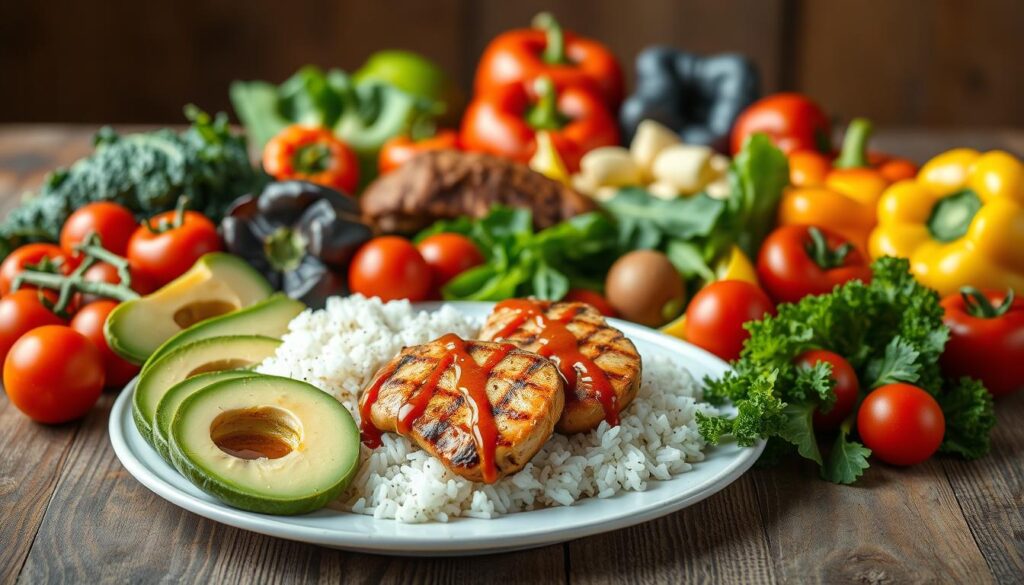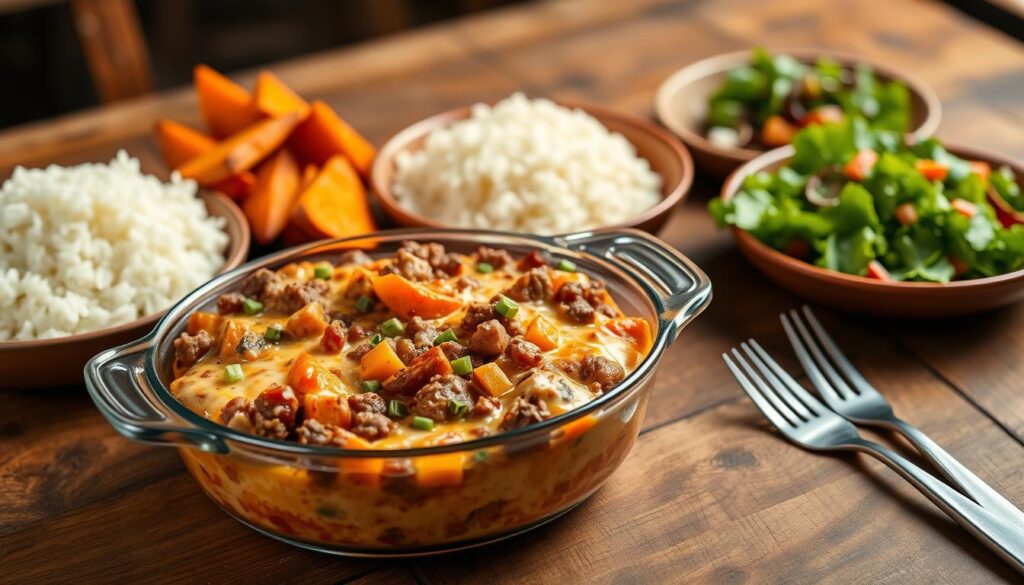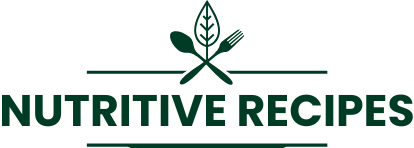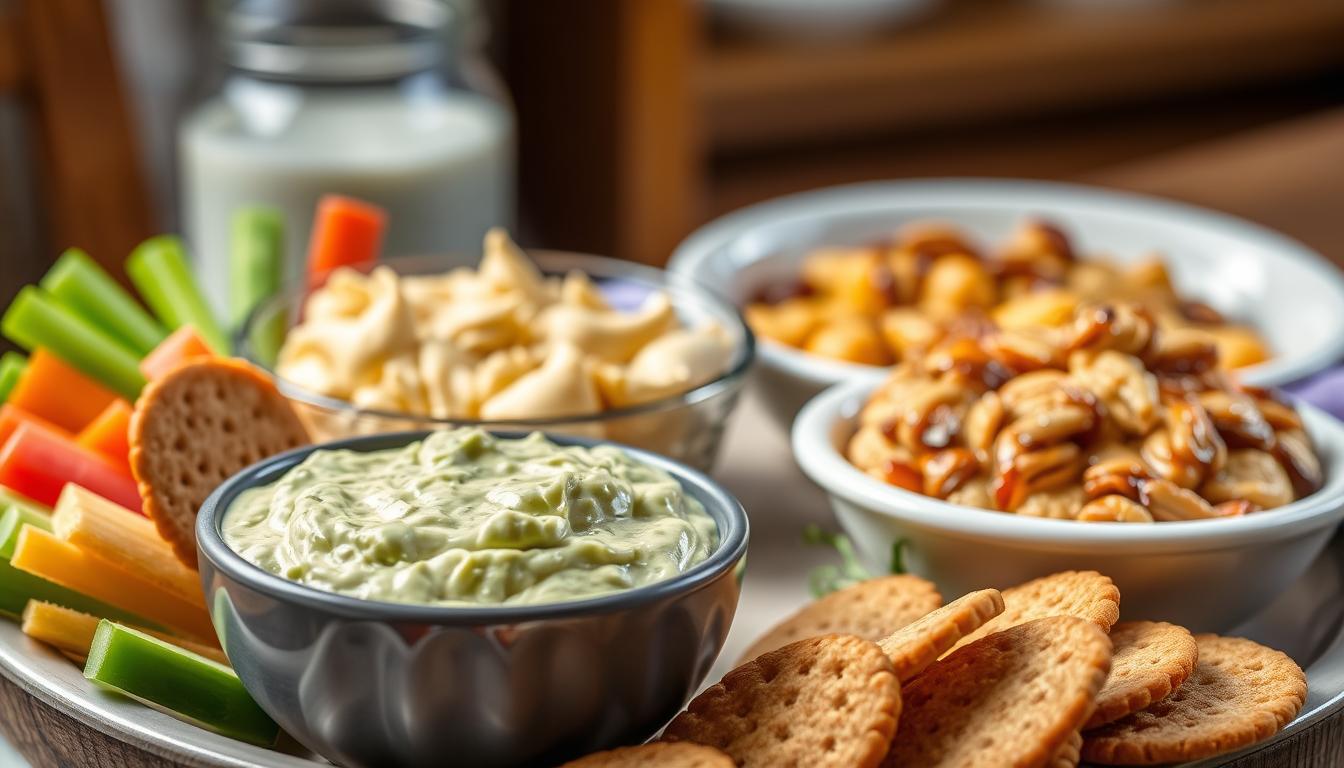Table of Contents
Managing chronic kidney disease can be tough. But, making high-calorie meals that are good for your kidneys can help a lot. In this article, I’ll share tips on making tasty, healthy meals for CKD patients.
It might seem hard to make high-calorie meals that are also good for your kidneys. But, with the right help, it can be easy and fun. We’ll talk about meal planning, kitchen tools, and recipe ideas for CKD patients.
Introduction to High-Calorie Kidney-Friendly Meals
CKD patients need high-calorie meals to stay healthy. These meals give them the energy and nutrients they need. By eating kidney-friendly meals, patients can live better and manage their disease better.
Key Takeaways
- High-calorie kidney-friendly meals are crucial for CKD patients to maintain a healthy weight
- A chronic kidney disease recipe with high calorie foods can improve overall health and well-being
- Kidney-friendly high calorie dishes provide necessary nutrients and energy for CKD patients
- Meal planning and kitchen tools are essential for preparing high-calorie kidney-friendly meals
- Incorporating high-calorie kidney-friendly meals into the diet can improve the quality of life for CKD patients
- High-calorie diets for CKD patients require careful planning and attention to nutritional needs
My Journey with High-Calorie Kidney-Friendly Cooking
Starting my journey to gain weight with a ckd meal plan for weight gain was tough. Finding renal diet high calorie recipes that tasted good and were healthy was a big challenge. I spent hours looking up and trying out new ingredients to make tasty meals.
Learning about high-calorie kidney-friendly cooking was a big step. I had to figure out how to balance protein and calories to gain weight. It was hard, but I was set on making it work. I made a list of renal diet high calorie recipes to add to my meals.
Some important ingredients I used were:
- Healthy fats like avocado and olive oil
- Protein-rich foods like chicken and fish
- Complex carbohydrates like brown rice and quinoa
Using these ingredients in my ckd meal plan for weight gain helped me make tasty, healthy meals. I also learned to drink plenty of water and watch my electrolytes to get the right nutrients.
Understanding Nutritional Needs in Chronic Kidney Disease
Living with chronic kidney disease has taught me a lot about nutrition. It’s key to eat nutritious high calorie meals for kidney disease to stay healthy. My doctors say a balanced diet with renal-friendly high calorie foods is vital for managing my condition.
A good diet can slow down kidney disease. It’s important to eat the right amount of calories, protein, and electrolytes. Here are some key points:
- Increasing caloric intake to maintain a healthy weight
- Consuming protein-rich foods to support muscle health
- Monitoring electrolyte levels to prevent imbalances
By choosing the right foods and drinking plenty of water, I can manage my kidney disease better. It’s also crucial to avoid foods high in phosphorus and sodium. These can harm my kidneys. With the right diet and lifestyle, I can lower my risk of complications and live better.
By focusing on my nutritional needs and making healthy choices, I can control my health. With my healthcare team’s guidance and a commitment to healthy eating, I can thrive with chronic kidney disease.
Essential Kitchen Tools for Preparing Renal-Friendly High-Calorie Meals
To make tasty and healthy low phosphorus high calorie recipes, you need the right tools. Cooking for high calorie options for ckd patients requires the best equipment. Here, I’ll share the must-have tools for a renal-friendly kitchen.
Having good pots and pans is key for cooking many dishes. Stainless steel or non-stick cookware is best because they’re easy to clean and last long. A slow cooker is also a smart choice. It’s great for cooking meals all day, perfect for when you’re busy.
A food scale is another vital tool. It helps you measure ingredients accurately. This is important when making low phosphorus high calorie recipes.
Here are some other essential kitchen tools:
- Utensils: spatulas, whisks, and wooden spoons
- Knives: a good set of sharp knives is essential for any kitchen
- Cooking utensils: a can opener, garlic press, and lemon squeezer
With these tools, you’ll be ready to make a variety of high calorie options for ckd patients. Choose tools that are easy to clean and durable. They’ll make cooking more fun and efficient.
Building Your Kidney-Friendly Pantry for High-Calorie Cooking
Managing chronic kidney disease through diet is a journey I’m on. I’ve found that a well-stocked pantry is key. It should have foods high in calories but good for your kidneys. This pantry should include shelf-stable items, fresh produce, and healthy fats and proteins.
Shelf-stable items like canned beans, vegetables, and fruits are always in my pantry. They’re convenient and full of nutrients. Grains like brown rice, quinoa, and whole-wheat pasta are also must-haves. They give me energy and fiber.
For fresh ingredients, I choose fruits and vegetables high in antioxidants and fiber. Berries, leafy greens, and citrus fruits are my go-to’s.
Essential Pantry Staples
- Canned beans and vegetables
- Whole grains like brown rice and quinoa
- Fresh fruits and vegetables
- Healthy fats like olive oil and avocado
- Lean proteins like chicken and fish
Using these ingredients, I make kidney-friendly dishes that are both healthy and tasty. With a bit of creativity, you can build a pantry that supports a balanced diet.
Chronic Kidney Disease Recipe with High Calorie Foods: My Top Choices
Living with chronic kidney disease, I’ve learned the importance of a ckd meal plan for weight gain. High-calorie foods are key to this plan. I’ll share my favorite renal diet high calorie recipes that taste great and are good for you.
My go-to recipes include avocado toast with scrambled eggs, grilled chicken with quinoa and veggies, and lentil soup with whole grain bread. These dishes are part of my ckd meal plan for weight gain. They help me keep a healthy weight while managing my disease.
Here are some essential ingredients for your renal diet high calorie recipes:
- Healthy fats like avocado, nuts, and seeds
- Protein sources like chicken, fish, and eggs
- Complex carbohydrates like whole grains, fruits, and vegetables
Always talk to your healthcare provider or a registered dietitian to find the best ckd meal plan for weight gain for you. With some creativity and planning, you can make tasty and healthy renal diet high calorie recipes. These will help you manage your chronic kidney disease and keep a healthy weight.
Meal Planning Strategies for Weight Gain with CKD

Living with chronic kidney disease has taught me the value of meal planning. It’s key to get the right nutrients for weight gain. I’ve found that a weekly meal plan keeps me on track. It helps me eat renal-friendly high calorie foods, which boosts my health.
When planning meals, I think about my dietary limits and likes. I aim for a mix of lean proteins, whole grains, and healthy fats. Here are some tips for a meal plan that helps with weight gain and CKD:
- Consult with a dietitian or healthcare provider to determine your individual calorie needs
- Plan meals that include a balance of protein, healthy fats, and complex carbohydrates
- Incorporate renal-friendly high calorie foods, such as avocado, nuts, and seeds, into your meals and snacks
- Drink plenty of fluids, such as water and low-sugar sports drinks, to stay hydrated
By using these tips and making a meal plan just for me, I’ve gained weight and improved my health. Always talk to a healthcare provider before changing your diet.
Smart Snacking Options for Extra Calories
As a CKD patient, it’s key to add low phosphorus high calorie recipes to your diet. Snacking is a smart way to get more calories during the day. Look for high calorie options for ckd patients that are also nutrient-rich and easy to digest.
Some good snack choices include:
- Nuts and seeds, such as almonds and pumpkin seeds, which are rich in healthy fats and protein
- Dried fruits, like dates and apricots, which are high in calories and fiber
- Energy bars, made with wholesome ingredients and minimal added sugars
When picking snacks, aim for high calorie options for ckd patients that are low in phosphorus. You can also make your own low phosphorus high calorie recipes at home. Use ingredients like avocado, peanut butter, and whole grain crackers.
Tips for Making Regular Recipes Kidney-Friendly and Calorie-Dense

Managing chronic kidney disease means focusing on a balanced diet. You can make your regular recipes kidney-friendly and high in calories with a few tweaks. Start by checking the ingredients and swapping high-phosphorus ones for lower-phosphorus ones.
For instance, use fresh herbs instead of salt for flavor. Choose low-phosphorus protein sources like chicken or fish. Also, try grilling or roasting to add taste without extra calories. Here are some tips to get you started:
- Use healthy fats like olive oil or avocado oil to add calories and flavor to your dishes
- Incorporate calorie-dense ingredients like nuts or seeds into your recipes
- Try using different spices and seasonings to add flavor without adding salt or sugar
By making these simple changes, you can make delicious and nutritious dishes. These dishes will help you manage your chronic kidney disease. Always talk to your healthcare provider or a registered dietitian for personalized advice.
Monitoring Your Progress and Adjusting Your Meal Plan
As I follow a ckd meal plan for weight gain, I’ve learned to watch my progress closely. I track my food, weight, and health to reach my goals. A good renal diet with high-calorie recipes is key to gaining weight and staying healthy.
I use food diaries and mobile apps to track my progress. These tools help me keep an eye on calories and weight gain. For instance, a food diary helps me record what I eat and see my progress over time.
Tracking Tools and Methods
- Food diaries: a simple and effective way to track daily food intake
- Mobile apps: convenient and easy to use, with features such as calorie tracking and meal planning
- Weight tracking: regular weigh-ins to monitor progress and make adjustments as needed
By keeping an eye on my progress and tweaking my meal plan, I stay on track. If I have doubts or questions, I talk to my dietitian for help. With the right tools and support, I’m sure I can meet my goals and keep a balanced diet with a ckd meal plan for weight gain and renal diet high calorie recipes.
Troubleshooting Common Challenges in High-Calorie Renal Diets
Following a high-calorie renal diet can be tough. You might get bored with food or lose motivation. It’s key to keep your goals in mind and make nutritious high calorie meals for kidney disease fun.
Try new renal-friendly high calorie foods and recipes. Look online or in cookbooks for ideas. Experiment with flavors and ingredients to keep your meals exciting.
Here are some tips to help you stay on track:
- Plan your meals in advance to ensure you have a variety of renal-friendly high calorie foods available.
- Keep a food diary to track your progress and identify patterns or challenges.
- Seek support from a dietitian or healthcare professional for personalized guidance.
By following these tips and staying committed, you can beat common challenges. Always choose nutritious high calorie meals for kidney disease. And don’t forget to get advice from your healthcare team.
Conclusion: Embracing a Sustainable High-Calorie Kidney-Friendly Lifestyle
As we reach the end of our journey, I hope you’ve gained valuable insights. You now know how to prepare high-calorie kidney-friendly meals to support your health. It’s important to be patient, persistent, and committed to self-care.
Every small step towards incorporating more calorie-dense, low-phosphorus foods can make a big difference. It can improve your overall quality of life.
You’ve learned how to stock your pantry and use essential kitchen tools. You’ve also created delicious recipes that meet your nutritional needs. Keep trying new ingredients and flavors.
Don’t be afraid to ask for help from your dietitian or healthcare team when needed. With their support and your dedication, you can manage a high-calorie kidney-friendly diet for a long time.
Remember, your health and well-being are the most important things. Approach this journey with a positive mindset. Celebrate your progress along the way.
Together, we can work towards a healthier, more vibrant future. We can do it, one nourishing meal at a time.

